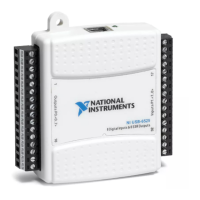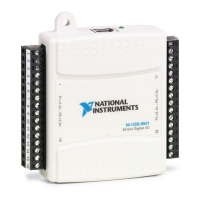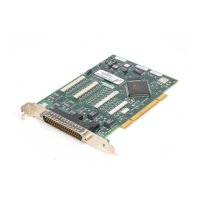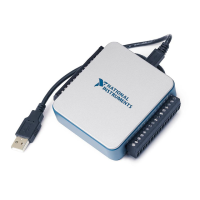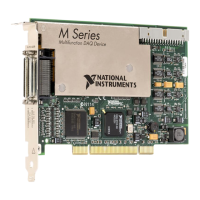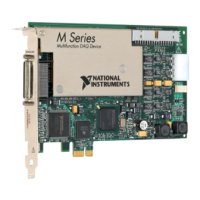Chapter 3 Programming
6527 Register-Level Programmer Manual 3-2 ni.com
Port N Filter Enables Address of Input Port N Filter Enables
(Base Address + 0x0C + N,whereN is the port number)
Change Status Address of Change Status Register
(Base Address + 0x14)
Master Interrupt Control Address of Master Interrupt Control Register
(Base Address + 0x15)
Port N Rising-Edge Detection Address of Input Port N Rising Edge Detection Enables
(Base Address + 0x18 + N,whereN is the port number)
Port N Falling-Edge Detection Address of Input Port N Falling Edge Detection Enables
(Base Address + 0x20 + N,whereN is the port number)
Write (address, data) Generic function call for a memory space Write of data
to address
Read (address) Generic function call for a memory space Read from
address
CWrite (offset, data) PCI configuration space write of data to PCI
configuration space offset
Initializing the PCI Local Bus
The PCI Local Bus is a high performance, 32-bit bus with multiplexed address and data lines.
This system arbitrates and assigns resources through software, freeing you from manually
setting switches and jumpers. The 6527 devices are fully compatible with the PCI Local Bus
Specification, Revision 2.0, from the PCI Special Interest Group (SIG).
The PCI Local Bus moves data for both the PCI-6527 and PXI-6527 devices. Configure the
bus-related resources before you execute a register-level program. To do this, you need to
assign a base address and interrupt channel to your 6527 device as shown in the following
sections.
Tip
Assign an interrupt even if you do not intend to use the change notification feature.
Initializing the PCI for the PC
For proper operation, configure the PCI MITE ASIC as described in this section. The
references made to PCI BIOS
1
calls are left for you to implement.
First, write an algorithm that finds and stores configuration information about the device.
You can do this by using PCI BIOS calls to search PCI configuration space for the National
1
You can obtain more information on PCI BIOS calls from the PCI SIG on the World Wide Web (
http://www.pcisig.com
).
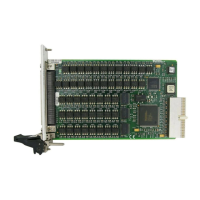
